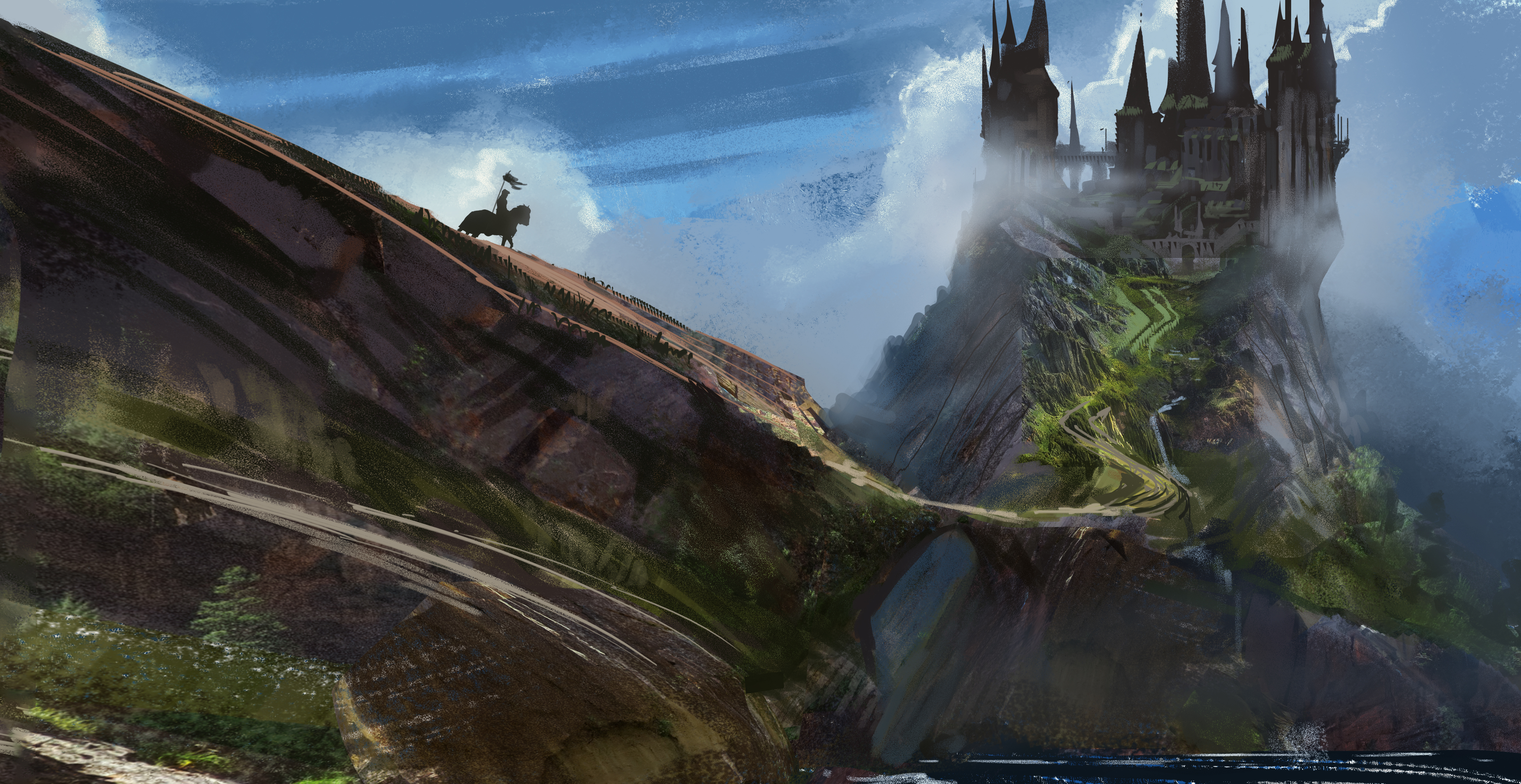Being a good digital artist is not only about being good at communicating ideas with pictures, but also being a fast and efficient worker when painting.
Often times I see my students struggle with this. Normal because most of them are just starting out with digital painting. But I find it important that you learn the right habits from the beginning. That’s why In this post I’ll give you some tips and tricks to improve your working speed.
1/ Use and map keyboard shortcuts logically
First all, when considering speeding up your workflow, you want to start using keyboards shortcuts.
I don’t think there is one single artist out there that doesn’t. At first, going back and forth to select a tool or option manually will seem like no big deal. It will look like you’re wasting no time at all, but you do. If you would map every time you repeat that same action, you’d be surprised how much time you’re loosing during the total time of your project. In the end, why bothering going over to right end of your screen to find the desired tool, then searching for it, and finally selecting it, if you can just get there with a shortcut?
Secondly, I like to map these shortcuts logically so they are all reachable with one hand (ie. my left hand). That way I’m not getting in uncomfortable positions to reach the right shortcuts. Next to that, it will speed up my workflow just that little bit more. It also lowers the chance of having Carpal Tunnel Syndrome.
Did you know that In Photoshop, shortcuts can be added for all the menus and tools?
2/ Use the Tool presets
The Tool presets will allow you to map every tool and accompanying setting to one simple shortcut. The presets can be viewed and listed similar like you would do in the Brush panel. It allows you to show only the presets for your active tool (ie. the brush tool) or show all the tools.
To give you an example: my Tool Presets panel contains often used tools like different brushes, but also custom shapes and patterns I often use. Each preset uses their own setting. One tool preset brush could be on the Normal blending mode, while the next tool preset brush is set on blending mode Overlay. That way I don’t loose time changing all the settings that comes with a certain tool because that information is stored in the tool preset.
3/ Work with Actions
Different to Tool Presets, Actions are able to record and play certain workflows or proceedings. For example, if you always start with an A4 canvas, downscale it to, let’s say 2000px and then fill it with blue, an Action could be of great help. If you record the action, it will store every step in a folder, so you play it later from a state you like.
One of my favourite Actions I made is one that prepares my scans from my sketchbook for online sharing. Not only it goes over the readability of the images by tweaking the contrast and adding a bit sharpness to it. But next to that I downsizes and saves the images on my desktop, ready to be uploaded. All that in just one click.
Another Action prepares my
4/ Create a clear working space
Personally I like to have a clear and clean working environment. In real life and on my computer (see: Desktop). It brings my mind too ease. I like to use that same approach when working in Photoshop. To more unnecessary panels you have, to more cluttered and unorganized your work space looks like. As a result, the harder it will be to find that one tool or button that you really need. Compare it with a toolbox that is nicely organised or one that isn’t. There is more chance you’ll find the right tool for the job and finish it quickly if you own that first toolbox (it’s scary how much of this is true).
Photoshop gives you to opportunity to organize and save different workspaces (see the top right buttons). I have my digital paint workspace as follows:
- Tools
- Color
- Brushes
- Tool Presets
- Layers
From time to time I like to add the Navigator and Action panels as well.
Final thoughts
I hope these pointers will help you a bit further in your digital painting career but please remember, speed is not everything. I think, above all, try to have fun while painting and paint what you like. To be honest, I often times enjoy working slow, taking my time to think and plan my next step, not working with undo’s, etc. If you don’t have that tight deadline knocking on your door, I doesn’t really matter if it took you 30 minutes or 30 hours. It’s the end result and process that matters. Give yourself enough room to experiment and fail.
I think avoiding hitting that undo key too much could definitely be added as a number five. You will be surprised how much time you loose with that. If you want, you can always let me know what tricks you use in your digital painting processes. Last week I talked about working with the Custom Shapes tool and Pattern Stamp tool. I’m interested in hearing your techniques as well.
Have fun painting!
